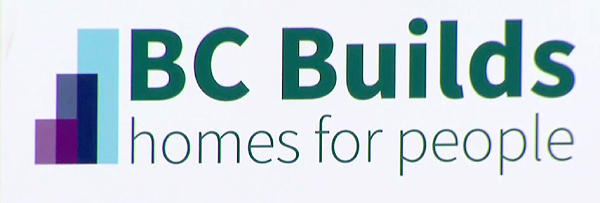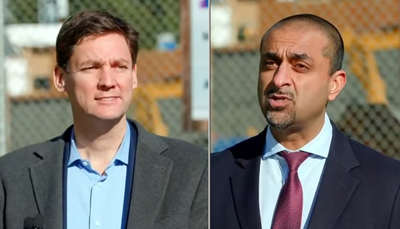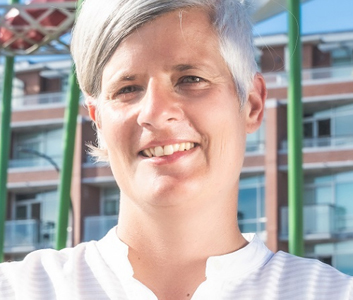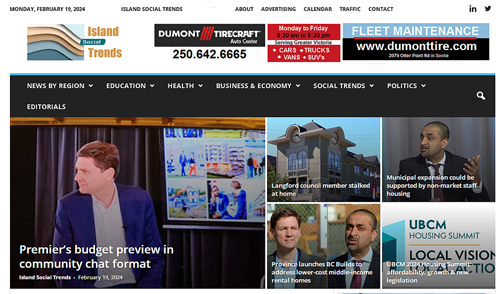
Monday February 19, 2024 | VICTORIA, BC
by Mary P Brooke | Island Social Trends
BC Builds is a housing program to speed up the development of new homes for middle-income working people throughout British Columbia.
The BC Builds program is delivered by BC Housing. It was announced last week by Premier David Eby. As well, a session about BC Builds was held at the Union of BC Municipalities (UBCM) Housing Summit 2024 event in Vancouver last week by Lisa Helps, Executive Lead, BC Builds [see BC Builds presentation PDF].

In today’s economy, the development of new rental housing is impacted by inflation, the cost of land, the cost of construction, and high interest rates. This can make financing and building new rental housing challenging, says the BC Government.
BC Builds uses low-cost land, low-interest financing, grants, and speeds up project timelines to reduce how long it takes to get a building from concept to construction.
The first projects are expected to be ready in 2026.
Housing crunch along with population increase:
The BC Builds program comes at a time when the province is dealing with a sudden population surge (over the past two to three years) as well as the impacts of high interest rates imposed by the Bank of Canada through a series of rate hikes with the goal of reducing inflation.
Schools and the health-care system are also impacted by the sudden population increase.
What is middle income?
There is some criticism — notably from the BC Greens — that what the government defines as middle income is requiring families to have a much higher income than many people really do.

A household income of $84,780 to $131,950 would be required for renting a studio or one-bedroom home. For renting a two-bedroom home or larger the household income would need to be $134,410 to $191,910.
It wasn’t so long ago that people with incomes at that level were buying much larger homes (and probably single-family homes, not the condos and townhomes that will be the largest part of BC Builds rental building outcomes). But expectations are having to change along with the challenges of our time.
More about BC Builds:
The BC Builds program design was led by former City of Victoria Mayor Lisa Helps who is now a housing consultant for the BC government (Helps was appointed as the Premier’s adviser on housing, in January 2023).

It was under her leadership in municipal politics that the idea of ‘missing middle’ was spawned. She presented the program at the
- BC Builds is meant to help middle-income British Columbians – such as teachers, nurses, transit operators, construction workers, small business owners, and others – find housing they can afford, in the communities where they live and work.
- BC Builds delivers housing for households at the top end of current BC Housing program income eligibility and beyond, to meet the growing need for more housing for people in these middle-income ranges.
- Provincial contributions to BC Builds can produce rents that will be attainable for households with incomes:
- $84,780 to $131,950 for a studio or one-bedroom home
- $134,410 to $191,910 for a two-bedroom home or larger
- Contributions of low-cost land, equity and waived fees from partners will make it possible to build housing that will be affordable for households below this range.
- BC Builds is not a traditional government housing program – there are other government and BC Housing programs that provide homes for low- to moderate-income earners.
Non-traditional housing program:
As posted on the BC Builds website:
- BC Builds brings together landowners and residential developers to speed up project development timelines.
- This is done by facilitating partnerships, supporting evaluation of proposals, streamlining development processes and by providing a dedicated team to work through obstacles as they arise.
- The goal of BC Builds is to move projects from concept to construction in 12 to 18 months, rather than the typical three-to-five years.
- Also, a key component of the initiative is to leverage underused public lands (parking lots, on top of community centres/fire halls) to create more viable rental projects, along with grant money to keep rents more affordable and get projects off the ground.





